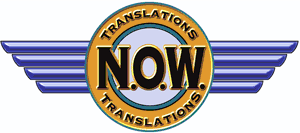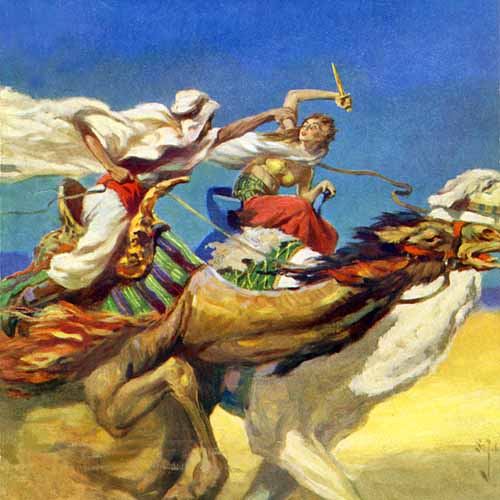Glossary of Translations Terms
Know Your Stuff - Read This Page!

It's true, isn't it? You've been smitten with Edwards who knows all about translating user manuals and multimedia and web sites and...and...Oh Stephanie! Can't you find happiness with me, a simple CEO of a Fortune 500 firm?
|
If You Read No Other Page At This Site - READ THIS!
Ever go to buy something you aren't an expert about; cigars or CPUs, skis or satellite dishes, tires or treadmills (or a 12-step program to stop using alliterations)? Quandary. You're at the hands of well-meaning suggestions from friends or suspicious shepherding from salesmen. You need knowledge, info, feedback, the facts. You need to avoid making big-buck boo-boos because you don't speak the language.
Things are no different when you buy the services of translation agencies. We thought you'd like to be able to speak some of the lingo behind localization. After reading this glossary, you'll sound like you've been around the block (and the world) a few times, not like you just fell off the translation truck. This should bring you better service and better prices.
Acceptable Language:
The expected language of the country. France, Germany, and Spain expect safety and installation instructions to be translated. They might not stop there. There may be an understanding that all materials should be translated, depending on current laws or the mood of the customs agents (we're not kidding). Thus, if your shipment is turned back at the border, it may be for reasons that the contents did not use "acceptable" language.
Agency:
A company specializing in one or more languages. One agency's services can vary greatly from another. Make sure you get plenty of information about the kind of work and clients the agency has on its resume.
|
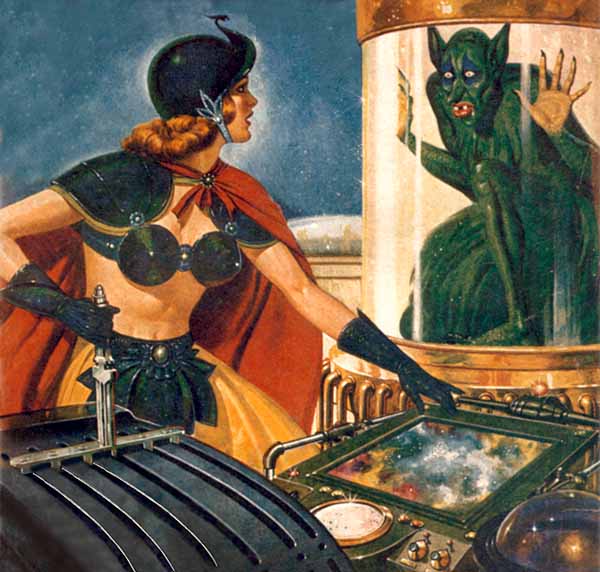
You've only yourself to blame, Bob. I'm just going by your translated documents and look what's happened.
|
DTP (aka Page Layout):
DTP stands for DeskTop Publishing. A DTPer who knows InDesign, PageMaker, XPress, and FrameMaker in English is not necessarily used by agencies to do foreign languages using those programs. A DTPer can't just know DTP. She must know how to DTP other languages without introducing mistakes in hyphenation, capitalization, abbreviations, accents, spacing, etc.
Editing (Source):
A source editor acts like any other editor of a publication (magazines, newspapers) by fine-tuning the written copy, checking for errors, and generally improving the text for publication. He can also be involved in trimming of text, both to improve readability and to make the source more economical to translate.
Editing (Target):
A target editor takes text that's been translated and improves it for readability, accuracy of language and subject matter, and catches grammatical or other errors. The person who translated the text cannot be the same one who edits it. Editing requires a separate set of eyes to be thorough. Note: When one agency's quote differs greatly from others, it's often because this all-important step is skipped.
FIGS:
French, Italian, German, Spanish, the four most common Euro languages for companies exporting from the US.
Full-Service Agency:
An agency that makes a point of offering translation, editing, proofing, and the all-important project management. Such agencies do not rely on only one person for a job, but make sure at least three or more pros are involved to cover the steps needed for quality work.
General Copy:
Text that doesn't require a specialized background to translate. This can be a simple business letter, packaging contents, etc. Virtually any qualified language professional can handle General Copy.
Job Grouping:
Virtually all agencies have minimums. Thus, if you only have a few words to translate at a time, you're going to be charged that minimum. Better to group more than one job together so you can avoid a minimum charge (rule of thumb: you can get 400 words done for the same price as 4). Job Grouping must be for a single language, like Thai, for example. Grouping a Thai job with a Swedish job doesn't work. Also, it's best if the subject matter is the same or at least part of it is a general subject matter so the same language team can be used.
Language (or Local) Conventions:
Accepted ways of showing dates, time, phone numbers, addresses, currency.
Localization:
This is the bigger brother of translations. It involves translating the text from source to target. It also involves localizing everything about the product for the target market; thus, if you have a stereo system, computer, or synthesizer, localizing it means changing all of the screening on the unit (On/Off switch, jacks, etc.) to the LCD screen's read outs. Naturally, this includes the manual, packaging, legals, graphics, sounds, narration, warranties; in a word - everything. This is just one example. Another would be changing the graphics, sound effects, and music of a product so it reflects the target market. Localization is region specific; thus Spanish for Argentina or French for Canada are considered.
M & E:
Music and Effects. If an actor must perform a translation for multimedia, film, etc., it's best if the sound engineer be given files with separate tracks for M & E and voice, so the voice can be replaced without affecting other sound elements.
|
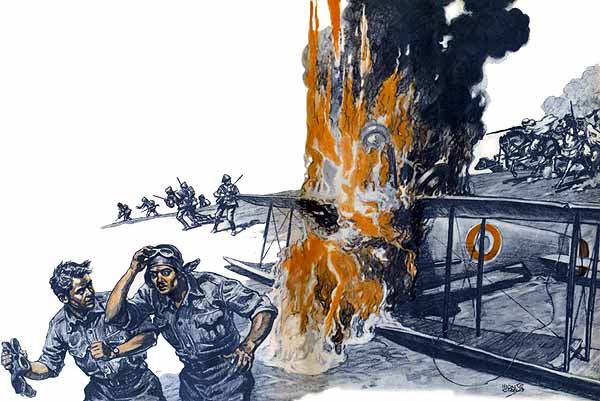
My last message seems to have offended the usually hospitable locals ever so slightly!
|
NAM:
North American French, Spanish (and English, too).
Project Coordinator:
This is the air-traffic controller of a language project. Project Coordinators work with the source material from the quoting through the production phase to project delivery. She analyzes source materials and asks questions of the client and requests backup materials, if necessary; assembles teams for each language; places the jobs with the teams (via fax, E-Mail, or overnight mail); fields questions from the teams and disseminates the client's responses; maintains schedules to accurately meet deadlines; makes coffee (who wouldn't?).
Proofing & Output Proofing:
A proofer deals with the jots and tittles of text: has all the text been translated or was something missed; is everything spelled, capitalized, and punctuated correctly; do the numbers in the Table of Contents and Index still match the layout; etc. An Output proofer does the same thing, but in his case, he's looking at a translation which has been DTP'd. Even after the original text has been proofed, if there is DTP involved, it should be proofed again.
Reference Materials:
Items the client can provide to help the project be a success. This includes old translations done for the client on previous projects; any part of the project translated by someone else to maintain consistency; any translated promotional materials (display ads, brochures, press releases, data sheets); terminology glossaries; translations on competitor's products; etc.
Reverse Translation:
This is a method to verify if a translation is a correct interpretation of the source language. We do not recommend this for these reasons: 1) it's expensive; 2) it's a re-interpretation of an interpretation. Reverse translation also does not capture the flavor of a localized product where the language teams can and must take creative liberties to make the target "market specific." The best way to ensure a translation is accurate is to have another language expert or (usually the foreign distributor) examine it and make suggestions or comments.
Single-Language or Specialized Agency:
Handles one language only (Japanese for example) or a region (Scandinavia); such agencies usually don't support or sell other language services.
Source Language:
The original language of the text. Source copy can be any language. If you are going from one common language into another common language (English into Mandarin), there is no problem finding qualified language teams. If you are going from a language that's not common or into one for which there are few experts (Japanese into Norwegian or Tagalog into French, for example), it's sometimes necessary to introduce a common "middle" language (one might translate Tagalog into English and then into French).
|
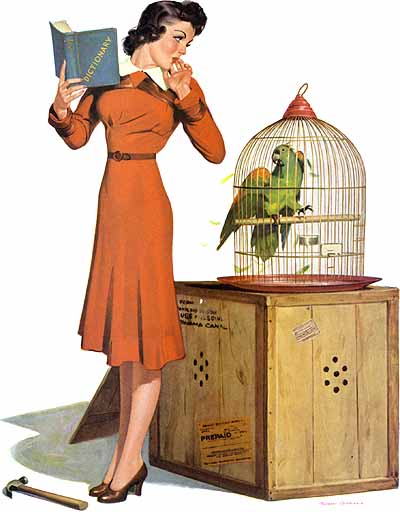
I just don't speak his language.
|
|
Source File:
Electronic file for the source language, usually Macintosh or PC, which can be overwritten in the target language. Source files for overwriting are usually word-processor, text, or RTF files. DTP files (PageMaker, et. al.) are usually not overwritten because of the complexity of foreign DTP. The translation is done in a word processing file, then poured into the DTP program for formatting.
Specialized Copy:
Text which concerns a specialized field and technical copy. Examples are medical, computer hardware/software, petrochemical, engineering, etc. Unlike General Copy, Specialized Copy requires a language team which is familiar with the subject matter.
TEP:
Translation, Editing, and Proofing.
Translation Kit (aka, TK or Translation Package):
This is what the client sends the agency. The term "TK" is most often used for larger projects, like multimedia software. TKs consist of the original materials (even if only in beta form), documentation, and explanations of how the client needs every portion of the localized materials to be returned (computer programs to use; graphics resolutions; sound file types; etc.). A TK need not be elaborate and can in fact bog down the translation quoting process if it is.
Translation:
A correct, and well-reading (or sounding) rendering of a source language into a target language. Often, a company will only translate user docs and packaging and leave other things (computer software, LCD read outs, silk-screens, etc.) in the source language. This is not the ideal, but a savvy agency will try and make the documentation as illustrative as possible of the non-translated materials.
24-Hour Turnaround:
A near mythical time frame, usually requested at the end of one day and meaning "back tomorrow morning." An agency will have it's talent all over the world and most professionals are like anyone else and like to close at 6 pm (even though they may keep working on projects, they're not available for new ones). If a file is short enough to be turned around in one working day, a rush charge is often added. Note: Translation is a creative process and the less time provided to complete a project, the less polished it will be.
Un-translatable:
Source language which does not have a target-language equivalent or can't be translated to maintain the same impact as the original. An example would be jokes, puns, hyperbole, adages, expressions, jargon.
VO:
Voice over of translated Language over the visuals being presented.
|
|
|
|
|



